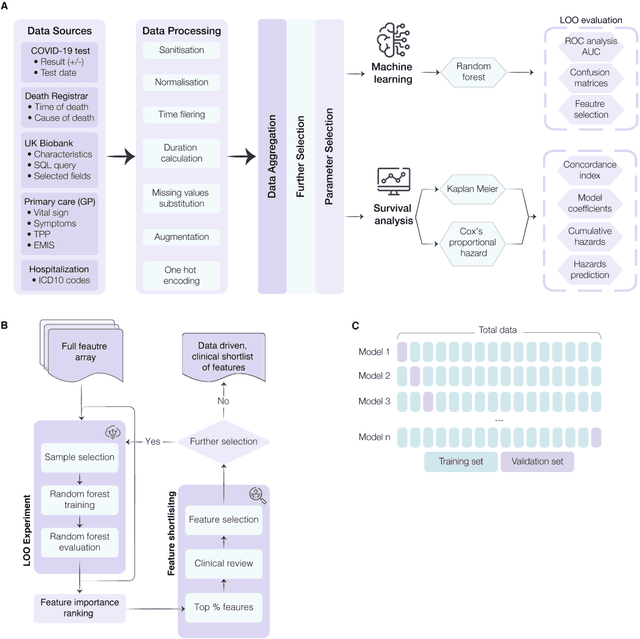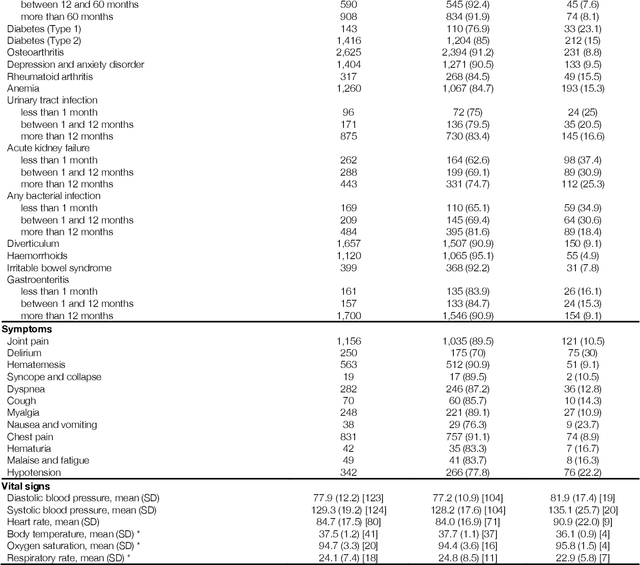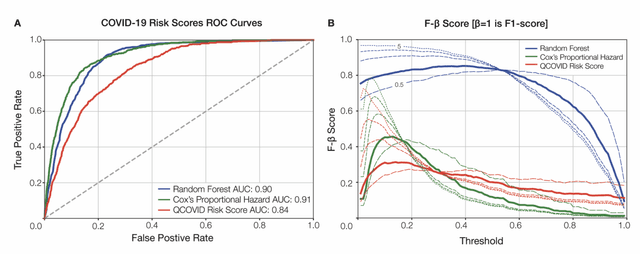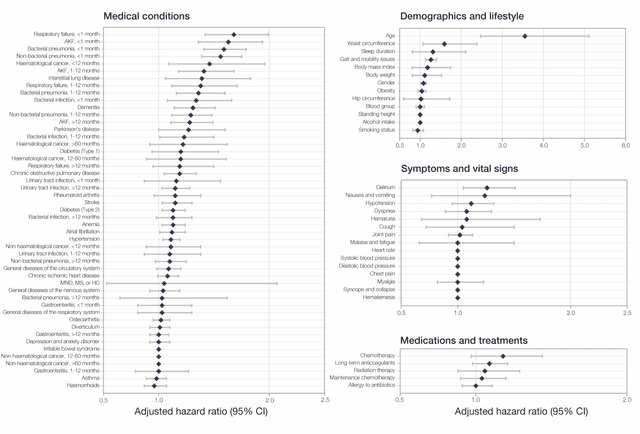Adam T. C. Booth
Development of a dynamic type 2 diabetes risk prediction tool: a UK Biobank study
Apr 20, 2021Abstract:Diabetes affects over 400 million people and is among the leading causes of morbidity worldwide. Identification of high-risk individuals can support early diagnosis and prevention of disease development through lifestyle changes. However, the majority of existing risk scores require information about blood-based factors which are not obtainable outside of the clinic. Here, we aimed to develop an accessible solution that could be deployed digitally and at scale. We developed a predictive 10-year type 2 diabetes risk score using 301 features derived from 472,830 participants in the UK Biobank dataset while excluding any features which are not easily obtainable by a smartphone. Using a data-driven feature selection process, 19 features were included in the final reduced model. A Cox proportional hazards model slightly overperformed a DeepSurv model trained using the same features, achieving a concordance index of 0.818 (95% CI: 0.812-0.823), compared to 0.811 (95% CI: 0.806-0.815). The final model showed good calibration. This tool can be used for clinical screening of individuals at risk of developing type 2 diabetes and to foster patient empowerment by broadening their knowledge of the factors affecting their personal risk.
Machine learning approach to dynamic risk modeling of mortality in COVID-19: a UK Biobank study
Apr 19, 2021



Abstract:The COVID-19 pandemic has created an urgent need for robust, scalable monitoring tools supporting stratification of high-risk patients. This research aims to develop and validate prediction models, using the UK Biobank, to estimate COVID-19 mortality risk in confirmed cases. From the 11,245 participants testing positive for COVID-19, we develop a data-driven random forest classification model with excellent performance (AUC: 0.91), using baseline characteristics, pre-existing conditions, symptoms, and vital signs, such that the score could dynamically assess mortality risk with disease deterioration. We also identify several significant novel predictors of COVID-19 mortality with equivalent or greater predictive value than established high-risk comorbidities, such as detailed anthropometrics and prior acute kidney failure, urinary tract infection, and pneumonias. The model design and feature selection enables utility in outpatient settings. Possible applications include supporting individual-level risk profiling and monitoring disease progression across patients with COVID-19 at-scale, especially in hospital-at-home settings.
 Add to Chrome
Add to Chrome Add to Firefox
Add to Firefox Add to Edge
Add to Edge